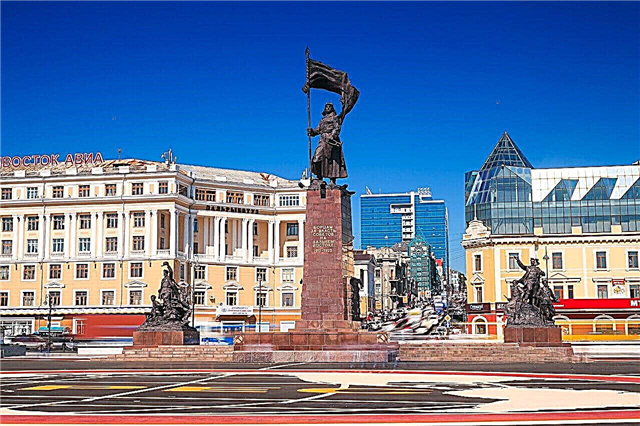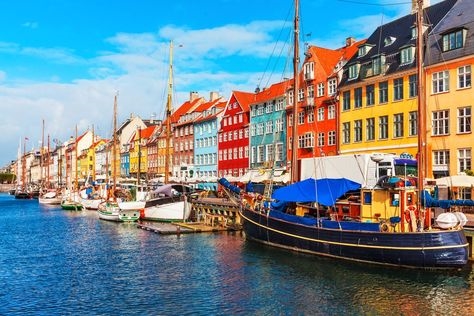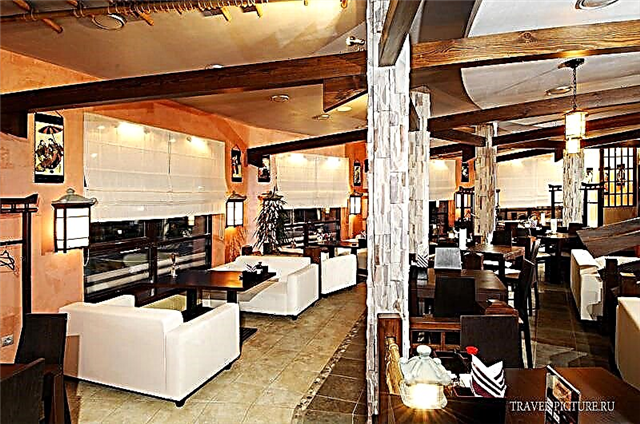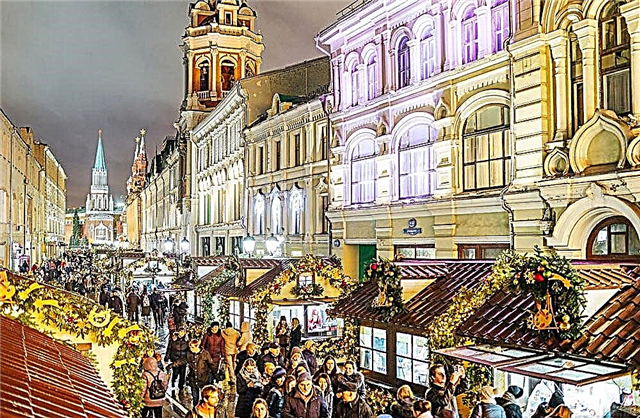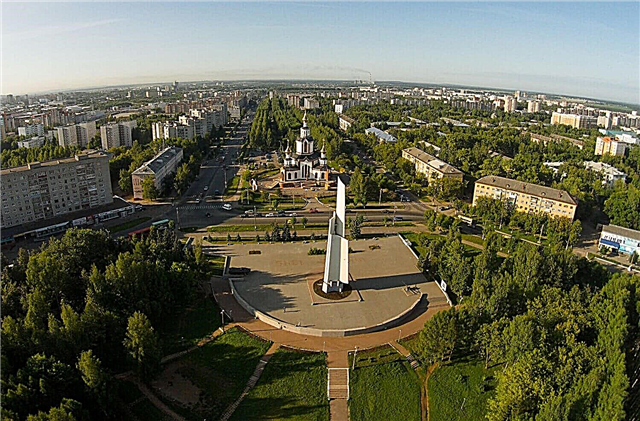The mass settlement of the Vyatka River basin began in the XIV century. In the 18th century, the Vyatka province was founded, on the site of which the Kirov region was formed in 1936. It includes 18 cities and 40 towns. 12 of them have the status of historical settlements - Kotelnich, Orlov, Kirov, Yaransk, Urzhum, etc. Population - 1272 thousand people. The main spheres of production are metallurgy, mechanical engineering, chemical and timber industries.
There are more than 3.5 thousand monuments of architecture, history and culture in the region. Samples of church architecture are of particular admiration. Also in the region there are about 200 natural monuments, several large reserves and reserves - Nurgush, Bushkovsky forest, Pizhemsky. Vyatka land is famous for folk crafts - woodwork, Vyatka lace and Dymkovo clay toy.
The largest cities of the Kirov region
List of the largest cities in terms of population in the region.
Kirov
The city on the banks of the Vyatka. Industrial, scientific and historical center of the Urals. In one hundred of the largest European cities. Known since 1181. It was called Vyatka, Khlynov, since 1934 - Kirov. Among the historical and cultural monuments are the Uspensky Trifonov Monastery, the Cathedrals of the Spassky and Seraphim of Sarov, the ancient Alexander Garden. The museums of M.E.Saltykov-Shchedrin, A.S.Grin, K.E. Tsiolkovsky, and the Vyatka Cabinet of Curiosities are worthy of attention.
Population - 513 thousand people

Kirovo-Chepetsk
The first mentions of a settlement at the mouth of the Cheptsa are found in 1405. In 1935, a workers' settlement was founded at this place during the construction of a thermal power plant, and later a chemical plant. In 1955 it was transformed into a city. The basis of the economy is the enterprises of the chemical and machine-building industries. Of interest are the All Saints Cathedral, the Krivoborskoe settlement, the Karkino recreation area, and the Oryol Lake natural monument.
Population - 72 thousand people.

Slobodskoy
A city on the banks of the Vyatka, 35 km from Kirov. The first mentions date back to 1489. City status was granted in 1780. Large enterprises - a plywood mill, a machine-building plant. There is a railway station. The decoration of the city is the Catherine's Cathedral of the 17th century. Among the sights there are the house-museums of the poet J. Rainis and the scientist-surgeon A. N. Bakulev, the women's Nativity of Christ monastery.
Population - 32 thousand inhabitants

Vyatskiye Polyany
Located on the banks of the Vyatka. City of Labor Glory. Leads its history since 1595, then it was the patrimony of the Assumption Monastery. In the status of a city - since 1942. The main enterprise is the Molot machine-building plant. There is a railway station. Among the attractions are the Nikolsky Cathedral in 1596, the Archangel Michael Church in 1728, the house-museum of the famous designer, creator of the PPSh weapon G. Shpagin.
Population - 32 thousand people.

Kotelnich
Located on the Vyatka River. In the list of historical cities of Russia. The date of foundation is 1181. County town - since 1780. The main enterprise is the plant for the production of processed and hard cheeses "Yantar". The outskirts of the city are famous for archaeological sites. The rare location of fossil animals of the Paleozoic era, studied by scientists from all over the world, is of particular value. The paleontological museum and dinopark are of interest.
Population - 23 thousand people.

Omutninsk
Located on the Omutnaya River. It was founded as a settlement at an iron-smelting plant in 1773. Converted to a city in 1921. The leading industries are woodworking, food, metallurgy. The area is rich in archeological monuments, the most famous are the Nagushinskaya site and the Martynianskoye settlement. The pride and favorite resting place of Omutninsk residents is the embankment of the lake of the same name.
Population - 22 thousand inhabitants.

Yaransk
Population - 16 thousand people.

Sovetsk
Traces its history from the settlement of Kukarka, founded on the site of a Mari settlement in 1594. Since 1918 - the city of Sovetsk. The woodworking and food industries are well developed. There are a lot of monuments of history, nature, monumental art in the city and its surroundings. Sovetsk is also famous for folk crafts - wicker weaving, Kukar lace, felt boots.
Population - 15 thousand people.

Sosnovka
Located on the Vyatka River. It was first mentioned in 1699. Industry has been developing since the 18th century. The main enterprises today are woodworking and shipbuilding plants, the largest timber transshipment base in the region. The city status was granted in 1962. Among the remarkable objects - the Palace of Culture "Shipbuilder", a monument to soldiers-fellow countrymen, a museum of local history.
Population - 11 thousand people.

Zuevka
A city on the coast of the Cheptsa River. It began with the station settlement, created in 1898. In 1944 it was transformed into a city. Agriculture, food and paper industries are developing. Among the sights there are archaeological sites "Gorodishche" site and Musikhinskoye settlement, several ancient temples. A house-museum of famous artists V.M. and A. Vasnetsov was organized in the village of Ryabovo.
Population - 10 thousand people.

White Kholunitsa
The name of the city is related to the name of the river on which it is located. It began with a village founded in 1764 around the Kholunytsky ironworks. In 1965, it was awarded the city status. The main enterprise is an engineering plant. Forestry is developed. The local attraction is the Belokholunitsky pond, created for the needs of the plant in the 18th century. Today it is a popular holiday destination.
Population - 10 thousand inhabitants.

Located on the river of the same name. It was founded in 1899 as a village at the railway station. In the status of a city - since 1944. The leading industry is timber harvesting and processing. The Luzsky district is famous for its ancient temples and chapels, which are classified as cultural heritage sites. In the city there is a fraternal cemetery of Soviet soldiers who died in evacuated hospitals on the territory of Luza during the Second World War.
Population - 10 thousand inhabitants.

Urzhum
It began with the founding of a fortress on the Urzhumka River in 1584. It received city status in 1780. The main enterprise is a distillery. There are about 70 historical and architectural monuments in Urzhum and the surrounding area. The most famous is the Trinity Cathedral. The museum of S. Kirov, a native of the city, was organized. Among the natural attractions are the mysterious Lake Shaitan and the Bushkovsky forest reserve.
Population - 9.9 thousand inhabitants.

Nolinsk
Located on the Voye River. It was founded as a Nikolsky village at the Assumption Trifonov Monastery in 1668. Received city status and the name Nolinsk in 1780. Among the enterprises is the famous Vyatsky Souvenir factory. The development of the city center is of historical and cultural value - merchant houses, temples, buildings of the district council, a tobacco factory. Museums of local lore, matryoshka dolls, the house-museum of V. Molotov have been opened.
Population - 9.7 thousand people.

Kearse
City on the Bolshoi Kirs river. It was founded as a settlement at the built iron foundry in 1729. It became a city in 1965. The leading enterprise is a cable plant. Local attractions include the Church of the Intercession of 1894, the Big Kirsinsky Pond, dug by serfs in 1729-39, an alley of lindens and larch trees planted in 1861, a historical museum.
Population - 9.5 thousand people.

Malmyzh
Located on the coast of the Shoshma River. It was founded in 1584 on the site of a Mari settlement. The status of the city was received in 1780. There is a mechanical repair plant, a creamery, a distillery, and a number of farms. Of interest are the Epiphany Cathedral of 1802, the Museum of Local Lore. In the vicinity there are the Azelinsky burial ground and the Buysky settlement - the monuments of the Azelinsky culture.
Population - 7.4 thousand people.

Orlov
Located on the coast of the Vyatka River.The first written records are found in 1459. In the status of a city - since 1780. In 1923-1992. was called Khalturin. The economy is based on the food industry and agriculture. The popular Orlov chess and other wooden board games are also produced here. The main attraction is the operating Rozhdestvensko-Bogoroditsky Church of 1840.
Population - 6.6 thousand people.

Murashi
Located in the north of the region. It was founded in 1895 as a small village at the railway station. In 1944 it was transformed into a city. Logging and woodworking are the backbone of the economy. The only tourist attraction in the city is the Museum of Local Lore. The surroundings are famous for their picturesque nature. There are about 150 lakes and ponds in the region, 60% of the territory is covered by forests. The hunting industry is developing.
Population - 6.2 thousand people.

Vakhrushi
Located 12 km from the town of Slobodskoy. It was founded as a small settlement at a tannery built by the Vakhrushev brothers in 1854. Since 1938 - in the status of the town. Several leather and shoe enterprises still operate in the village. Local attractions - Church of the Ascension, Vakhrushevs' estate, tannery buildings.
Population - 9.5 thousand inhabitants.

Murygino
Located on the banks of the Vyatka, 25 km from Kirov. Leads its history since 1785. The formation of the settlement is associated with the history of the development of a paper mill, which from a small merchant manufactory turned into a large enterprise "Red Cadet", today - "Elikon". Since 1938 it has had the status of a town. In the village, the Exaltation of the Cross Church with a porcelain iconostasis made in Yekaterinburg is notable.
Population - 7.2 thousand people.


